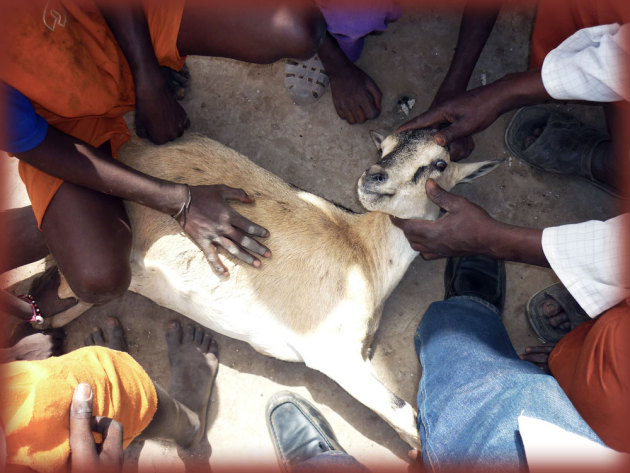Clinical diagnosis
Suspicion of PPR is based on a combination of several clinical signs that should alert livestock farmers, notably fever associated with nasal discharge and lacrimation, which appear suddenly in several small ruminants in a herd. However, these three elements are not enough to establish a diagnosis because they are not specific to PPR. They also are expressed in other pathologies of small ruminants present in PPR enzootic areas such as contagious ecthyma and contagious caprine pleuropneumonia.
A rigorous differential comparison of symptoms and the careful inspection of all animals[1] in a herd are thus critical to assemble all of the clinical and lesional clues which are not all always visible on a single individual. Depending on the breed, species, age and immune status of animals, the disease can take different clinical forms within the same herd. This poses additional difficulties for untrained farmers trying to identify the disease, especially if PPR is accompanied by confusing secondary infections such as respiratory pasteurellosis.
The occurrence at the herd level of outside events considered to be risk factors must be taken into account and can reinforce the suspicion of PPR.


















